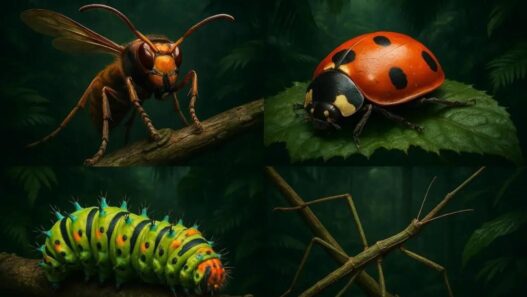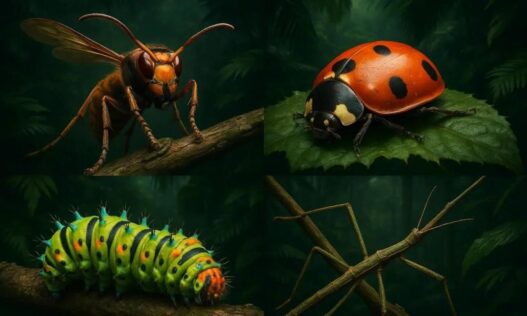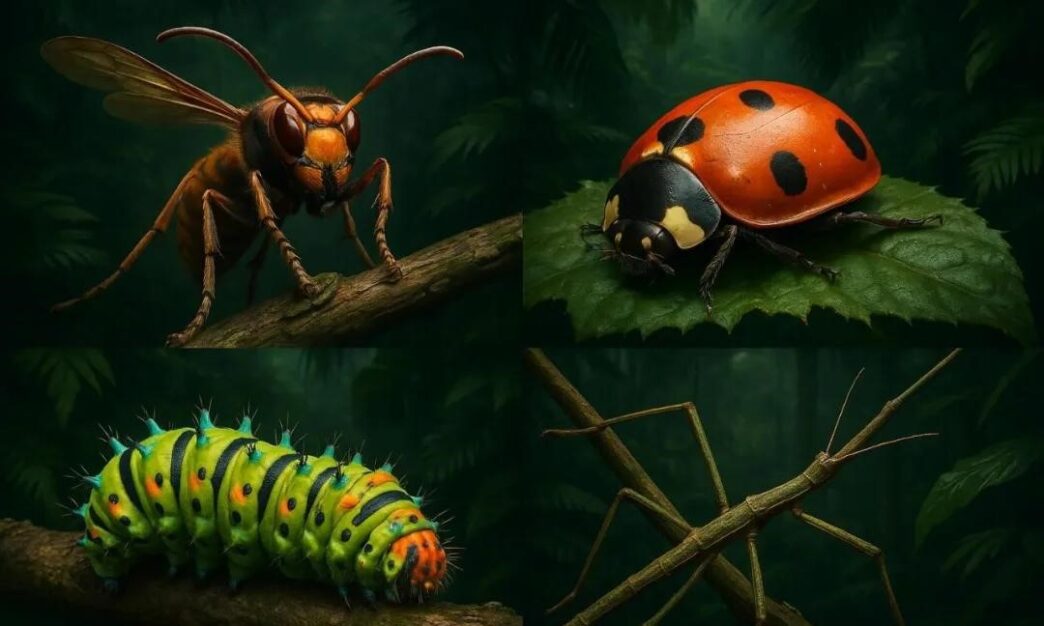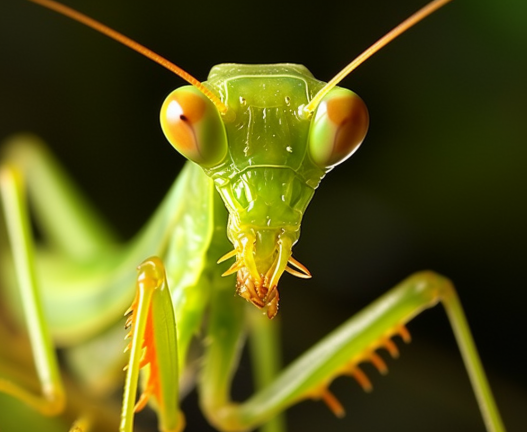In the wild, tiny insects face huge dangers every day. Birds, frogs, and lizards constantly hunt them down. So how do these fragile creatures survive in such a ruthless world? They’ve evolved some of nature’s most mind-blowing defense mechanisms. From foul-smelling sprays to fake bird poop disguises, insects are masters of survival. Here are 10 astonishing ways insects dodge death and outwit predators.
💚 1. The Stink Squad: Odor as a Weapon
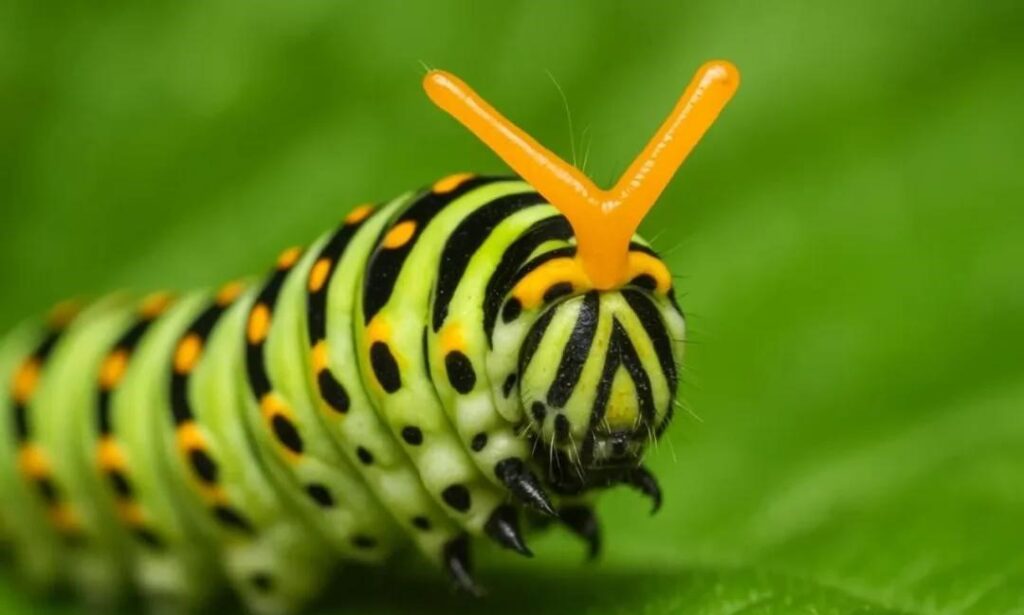
Many insects, like stink bugs, use foul smells to fend off predators. These bugs release a strong, revolting chemical from specialized glands when threatened. For example, the larvae of the Papilio polytes butterfly wave their Y-shaped osmeterium to unleash a gag-inducing stench that repels attackers.
🪨 2. Chemical Cannons: Liquid Defense
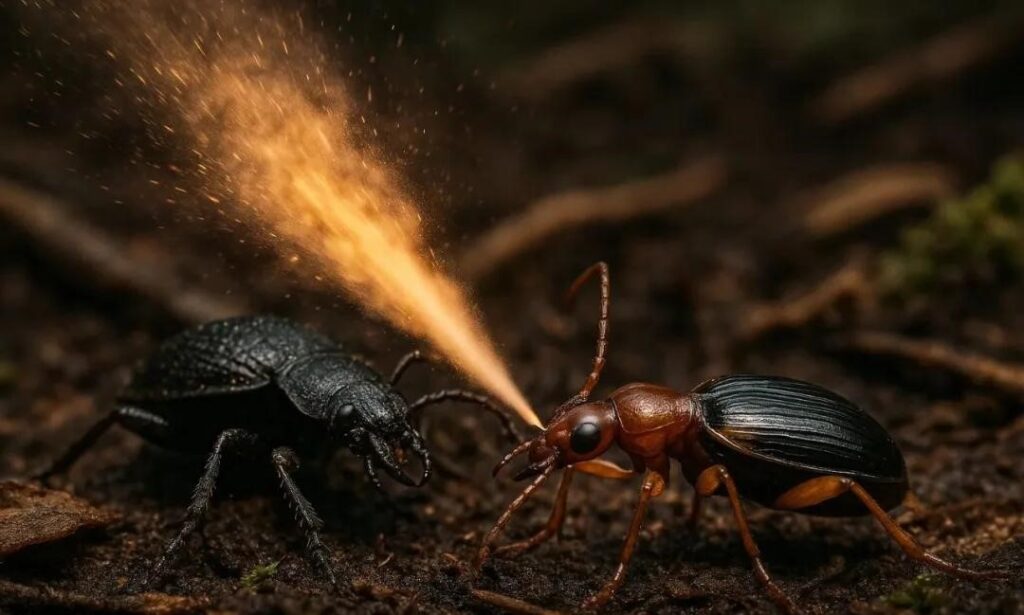
Some bugs take it up a notch by shooting toxic chemicals. Certain beetles like the bombardier beetle store two reactive compounds in their abdomen. When threatened, they mix and fire them at high temperatures, scalding predators with a sizzling spray. Others, like blister beetles, bleed toxins when handled.
🩸 3. Spiky Surprise: Poisonous Hair Defense
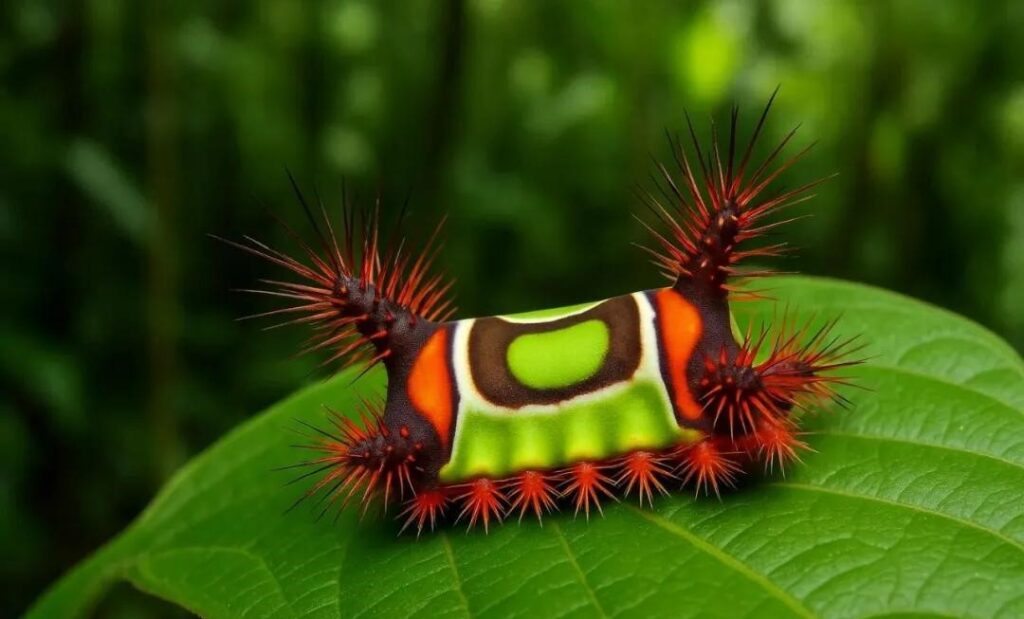
Many caterpillars are covered in toxic, sharp hairs. Even a gentle touch can cause stinging pain, rashes, or worse. While they may look fluffy and harmless, these fuzzy critters are booby-trapped with venomous spikes that make predators think twice.
🐝 4. Sting Operation: Bees, Wasps & Ants
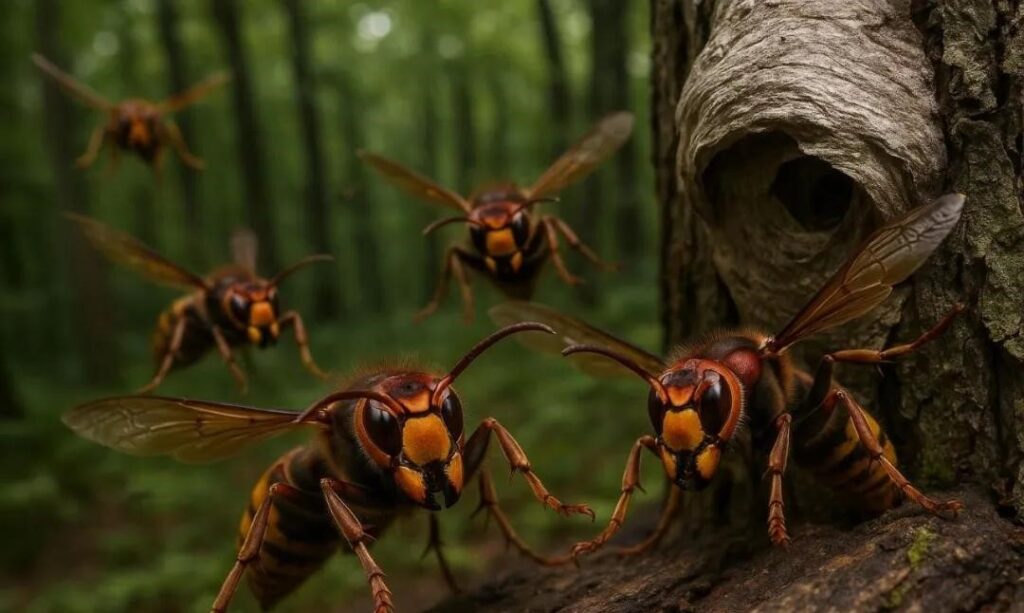
Bees, wasps, and ants don’t back down from a fight. With venomous stingers, they deliver painful jabs to defend their colonies. Mess with their nest, and you might find yourself in the middle of a swarming attack that few predators dare challenge.
🌳 5. Invisible Mode: Perfect Camouflage
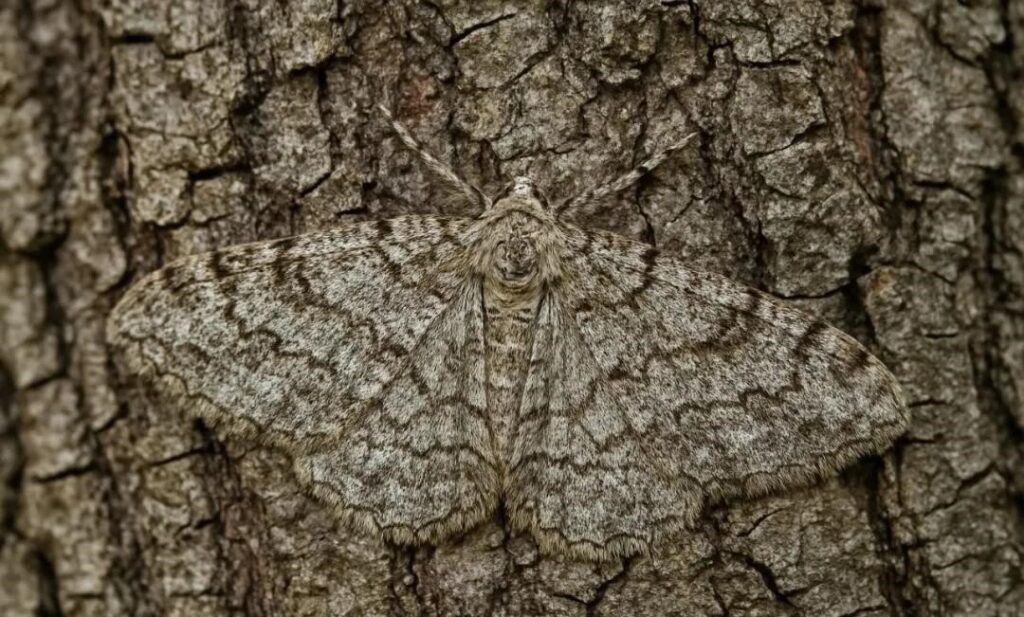
Many insects vanish into the scenery. Leafhoppers, moths, and katydids blend into leaves, bark, or grass with incredible accuracy. Stillness is their superpower—you could be staring right at one and never know it.
🌿 6. Ultimate Disguise: Nature’s Illusionists
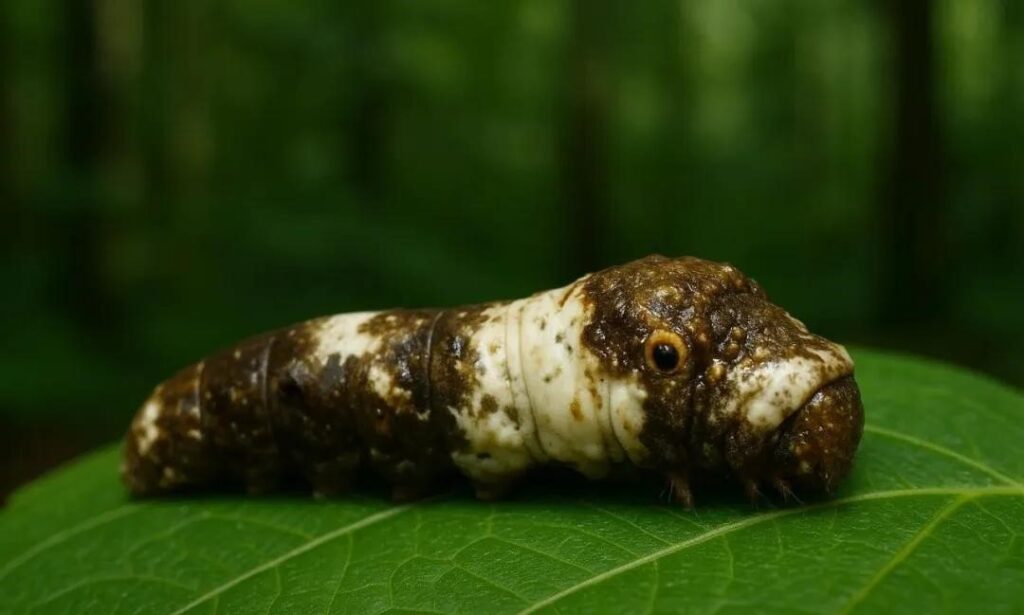
Some bugs take camouflage to an artistic level. Stick insects sway like twigs in the breeze. Others mimic leaves with fake veins and ragged edges. Then there’s the bird-dropping caterpillar, which looks like poop—a disguise so gross, it’s genius.
🌈 7. Warning Colors: Bright Means Danger
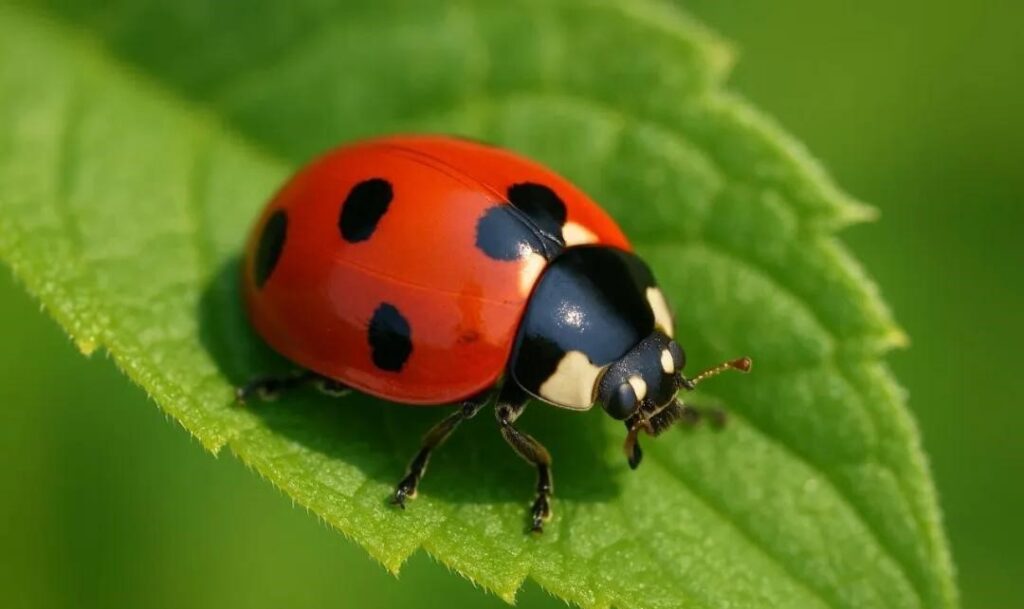
Bright colors aren’t just for show. Ladybugs, monarch butterflies, and wasps flash bold red, yellow, or orange hues to say “Back off, I’m toxic!” This tactic, called aposematism, trains predators to remember and avoid them.
👷 8. The Great Pretenders: Copycats for Survival
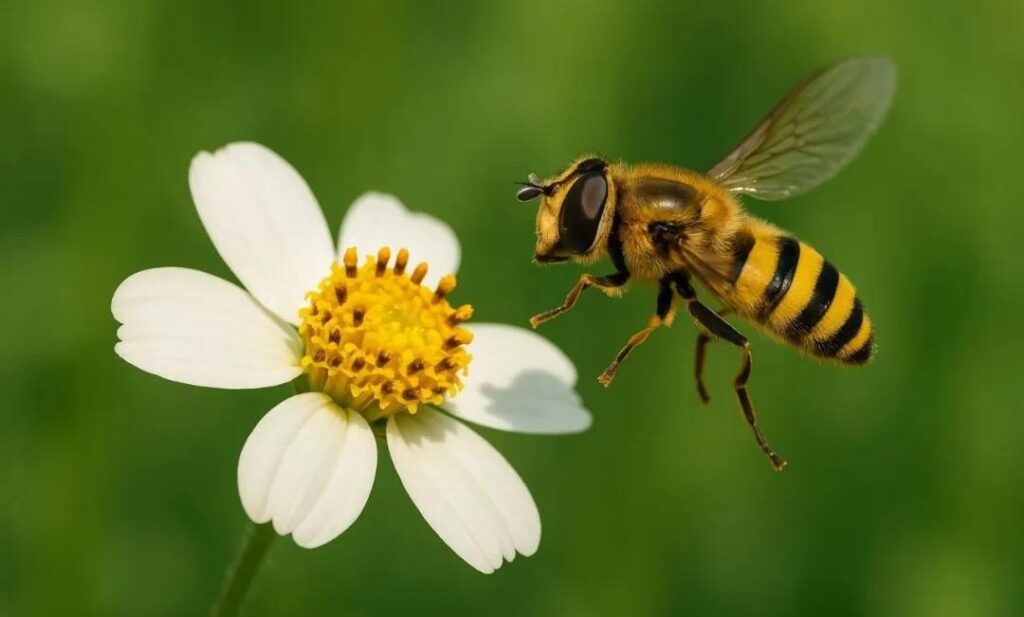
What if you’re harmless? Fake it. Some insects, like the viceroy butterfly, mimic the appearance of toxic ones like the monarch butterfly. Hoverflies and certain moths copy bees and wasps so well, even predators can’t tell the difference.
👢 9. Sacrifice a Limb: Escape by Self-Amputation
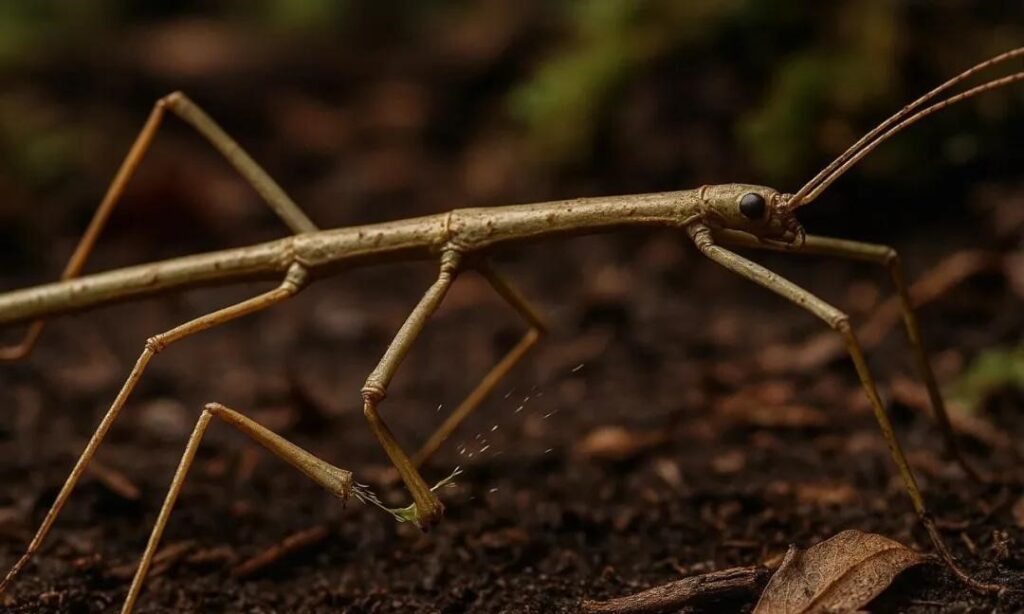
For bugs with long legs, dropping one to escape is a small price to pay. Insects like stick bugs and crickets can shed a limb when caught. This process, called autotomy, allows them to flee—and sometimes even regrow the lost limb later.
10. Playing Dead: Fake Death to Fool Predators
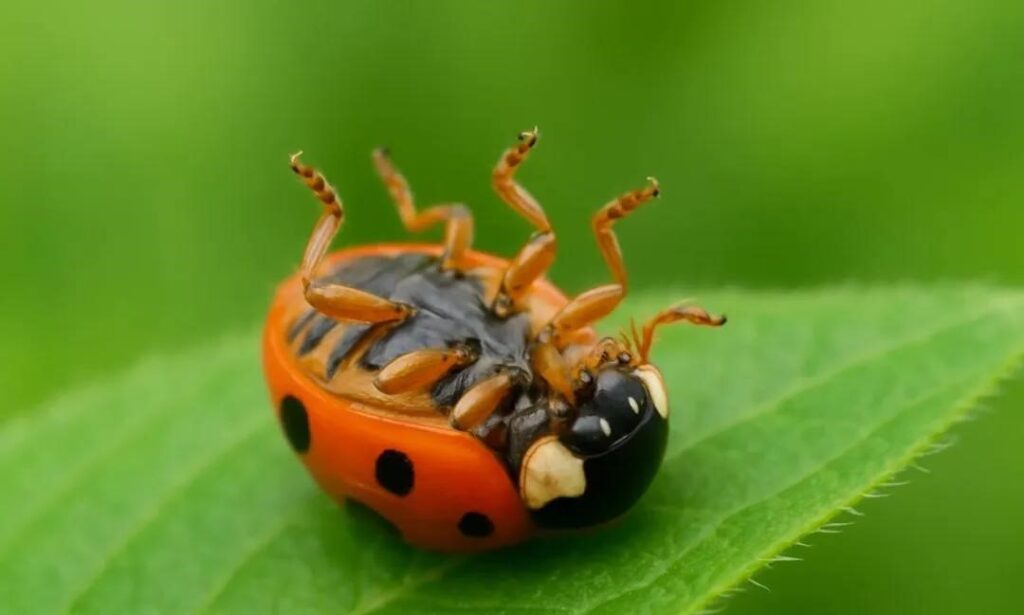
When all else fails, just play dead. Ladybugs, millipedes, and some moths go limp when threatened, tricking predators into thinking they’re already dead and not worth eating. It’s low-energy, high-effect survival.
✨ Final Buzz: Small Bodies, Big Survival Tactics
These insect survival tricks aren’t just fascinating—they’re a reminder of nature’s ingenuity. Though tiny, insects have evolved an incredible range of defenses to avoid becoming lunch. The next time you swat at a bug, just remember: it’s probably packing some James Bond-worthy skills.





